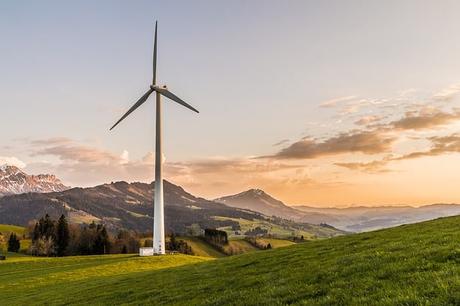Earth day is a yearly celebration of a contemporary environmental movement. The movement was initiated on April 22, 1970 and is a day when people take time to remember and aid the very one thing that enables their survival, in addition to inspiring action to help in protecting it. Whether the aim is to garden, consume local foods, recycle or use reusable bags, sustainable living should be incorporated in the day to day activities of our lives.
So, below are 13+ ways of making each day an Earth Day by embracing sustainable living choices.

1. Rethinking transport means
Getting a bike as a means of transport is an effective way of sustaining the environment. It is mostly convenient to people who have a casual dress code at work since it is easier to ride a bike that way. Going to the grocery store can also be much easier in a bike, additionally; it is a form of working out. Using a bike will help in reducing the number of cars on the road, which means it will reduce congestion and pollution of the environment.
The idea here is to skip as many times as you can, other methods could be joining carpooling, walking or using public means. The Environmental Protection Agency (EPA) suggests that when driving a car, one can reduce taking breaks and gas pedals, receiving customary tune ups such as changing oils and using the maintenance schedule of the manufacturer.
Choosing a fuel friendly car, for example, electric and hybrid vehicles, and shutting the car when not in use as well as avoiding idling are impressive sustainable living choices. Whilst some of the recommendations will require a large amount of money, it should be viewed as an investment in the planet and are easy to put into practice. One can begin with little lifestyle adjustments and then progress to bigger changes. The above are superb alternatives that will make a huge difference in protecting the environment and preserving energy.
2. Starting a garden
There is a lot of energy required to grow and ship food, particularly fresh produce which utilizes a lot of energy and increases carbon footprint. It is simple to counter such by deciding to also be a supplier. One can easily counter some of that by supplying or growing their own foods. Gardening aids in reducing the Carbon Dioxide (CO2) that is emitted during transportation.
A community garden is also an option if an individual is not in a position to start a personal garden. Furthermore, a garden will provide pollinators such as pollen wasps, bees, ants, flower beetles, and butterflies with plants for pollination which will help sustain the eco system and promote biodiversity.
3. Creating an energy efficient home
Making a home energy efficient is simple when one knows how to. Depending on the home, preference and budget, big system changes can be established that will change how energy is consumed or even develop better ways of improving the existing energy saving. There are a lot of options from weather-stripping the doors, stopping drafts, and replacing air filters.
Another option is using solar panels. They are getting more affordable and many people are using them to supply energy for their homes, living in a region that gets sufficient sun is the key. Moreover, updating the light bulbs by changing to more environment friendly and the energy saving ones will also help in conserving energy.
4. Supporting renewable energy
Even though renewable energy is really convenient, the climate gets harsh by the day. Small renewable start-ups are no match to the fossil fuel industry, which has been firmly implanted in the people’s day to day lives, and will not easily relinquish the market share it has in the energy sector.
In this sense, renewable energy corporations require individuals’ assistance in combating this. There are a number of ways in which people can support the transitioning to renewable energy. One of the ways of doing so is by installing solar systems in homes.
However, when this is made impossible due to affordability or lack of sun, another option is by purchasing stocks or investing in a corporation that is in support of green energy. So, spreading the word, using their products, informing other people, or switching to the use of renewable energy will go a long way in making make every day earth day.
5. Skipping single-use objects
The modern lifestyle has been built on convenience and thus, single-use items are encountered on a daily basis. Nonetheless, these items have proven to be costly to the surroundings and with devastating impacts on the environments. Landfills, for example, are full of single-use items like diapers, plastics water bottles, cigarette butts just to mention a few. Other single-use items range from plastic shopping bags, straws that come with food, disposable plates, serviettes, and wet wipes.
What most people are unaware of is that the use of these items can be reduced or eliminated completely. For instance, instead of using paper towels and diapers, cloth towels and napkins can be used respectively since they are cloth which can be cleaned up.
Take away cups can as well be avoided as they are a big problem to the environment by using a reusable cup. Switching out plastic straws for glass or steel metal and staying away from the small cups of sauces served with food are equally sustainable living choices. For those that may be difficult to eliminate, minimizing their usage will greatly help.
6. Avoiding meat on some days
Animal agriculture is one of the biggest contributors to greenhouse gasses. The process involves feeding the animals, butchering and then transporting the meat to where consumers are. Attempting to cut on meat intake is one of the efficient and most sensible ways of helping the globe.
The Dietary Guidelines for America, which gets updated after every five years, advocates that individuals should guzzle about 5.5 ounces of meat a day. Nevertheless, a lot of people reach that limit by the time they are taking lunch. To make a sustainable living choice and ensure every day is an earth day, you can either become a vegetarians that has its added health benefits or reduce the amount of meat eaten.

7. Buying less
In view of the fact that our modern identities are largely based on the consumer culture with advertising perpetuating it, buying less could be one of the most difficult things to do even though it is crucial. The developed nations cause the emission of more greenhouse gasses and also guzzle a lot of the world’s resources in the name of producing in bulk to supporting the ever rising consumer demands.
The reason is because people have a tendency of wanting more stuff, clothes, better machines, and homes. People think buying the expensive and trendy stuff is what life should be made of. But as absurd as it may sound to some people, purchasing smaller houses, staying with older clothes, and buying fewer devices is a step in the right direction. Buying less makes every day and earth day and encourages sustainable living.
8. Ditch the plastic bags
Plastic bags which are mostly single use end up in landfills and also clog the oceans. Studies conducted show that about eight million metric tons are deposited in the oceans annually. Reduction of single use plastic bags usage is an effectual method of cutting down on the quantity of plastic that ends up in the water bodies. Another research conducted in 2015 by Journal Science suggests the use of reusable shopping bags in stores instead.
9. Swap out the plastic wraps
An alternative to a food plastic wrap is the Bee’s Wrap. It is environment-friendly and super cute. Manufacturing companies can explore this option as a way of making the environment sustainable and ensure we celebrate each day on earth as an environment day.
Notably, it will decrease the dependence on plastic products as it can inspire research on how to completely do away with plastic products (especially the single-use plastic items). The advantage of the Bee’s Wrap is that it is been made from jojoba oil and beeswax-coated organic cotton muslin. Hence, the wrap is reasonably priced, reusable, can be washed and it can decompose.
10. Change to paperless billing
Most of the bills are normally sent through letters, from electricity to rent bills. Paperless billing is a great way of reducing the dependence on papers, a lot of phone companies and utility businesses are encouraging individuals to change to paperless billing as it will save on time and energy. This can be done through accessing the companies’ websites to get the necessary information or asking the company to send you the bills, letters, and receipts via mail.
11. Owning a water bottle
Another single use plastic item that clogs up landfills while polluting water bodies is the commercial water bottles. Buying your own water bottle will end up saving money and avoiding the disposal of plastics in the oceans and in landfills. Additionally, buying stainless steel and glass water bottles means they are normally BPA free – this will protect your health.
12. Enjoy nature
Do stuff such as hiking or nature walks because they help in connecting with nature and reminding one the reason why it is essential to put time, effort and energy in giving back to nature.
13. Volunteering to support environmental programs
Volunteering one’s time to support environmental programs in organizations either at international or local level is an impressive way of making sustainable living choices that make every day earth day. It can be planting trees, funding tree nurseries projects, and collecting litter in the streets. These are important ways of trying to balance the eco-system.
14. Education oneself about the planet
Learning more about the planet will enable people to treasure it more since they will understand better how it works. Sharing the knowledge is also part of the process; creating awareness is one of the steps in reducing environmental degradation.

